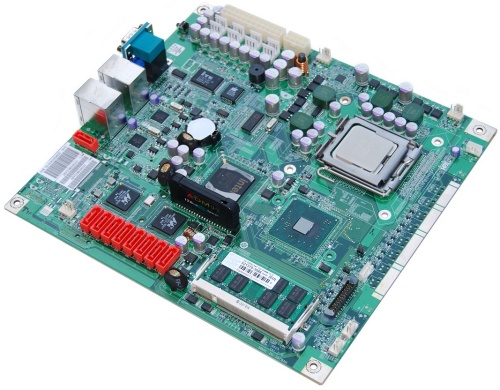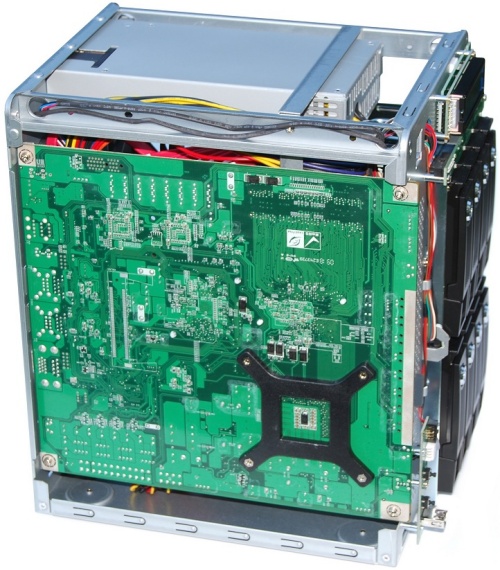Hardware: A Closer Look
Taking apart the QNAP TS-809 Pro Turbo NAS was no easy task, but this wouldn't have been a true TechSpot review if we didn't show you the technical stuff inside. And it was well worth the effort too as the internal workings of this NAS device are nothing like previous products that we have reviewed.


While the vast majority of NAS devices are powered by a processor rated at around or less than 1GHz, including Synology products which feature a 1.06GHz processor with no more than 1GB of RAM, the TS-809 Pro Turbo houses an Intel Core 2 Duo E7400 processor inside. Needless to say, we were impressed.

This is the very same processor we used in our desktop comparison test system – a 2.8GHz part that features 3MB of L2 cache and operates on a 1066MHz FSB. The Core 2 Duo chip is cooled via a massive, passively cooled aluminum heatsink and is installed using a standard LGA775 mounting bracket. This means it's possible to change the processor if needed, albeit doing so would void your warranty.

QNAP is not messing around with this one and has loaded the TS-809 Pro Turbo with 2GB of DDR2-667 memory from Transcend. Only one of two available SO-DIMM slots on the motherboard is being used, so you could still double the memory capacity simply by adding a second stick. That said, we really don't see the need for adding more memory than what's already offered by default, and again doing so would void your warranty.

The Core 2 Duo E7400 processor is being complemented by the Intel 945GC Express chipset and its ICH7 south bridge. However, since the latter only supports 4 SATA ports without any kind of RAID abilities, QNAP has gone ahead and dumped it in favor of a more substantial solution.



Specifically, a pair of Marvell 88SX7042 controllers will each support 4 SATA ports using the PCI Express x4 bus. There are also a couple of Broadcom BCM5787 10/100/1000BASE-T Gigabit Ethernet controllers utilizing the PCI Express bus for maximum throughput.



Having seen the hardware inside the TS-809 Pro Turbo it's easier to understand why QNAP slapped such a hefty price tag on this product. It definitely looks much more like a typical desktop computer than previously reviewed units, and has clearly been designed to be the most powerful self contained NAS device money can buy.